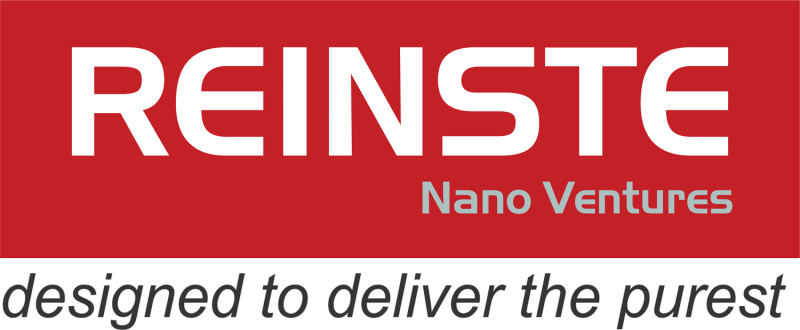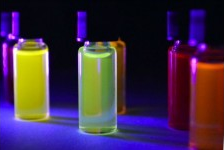Revolutionizing Indian Agriculture with Nanotechnology
India stands at a critical juncture. With a burgeoning population and the increasing pressures of climate change, the need for a more efficient, resilient, and sustainable agricultural sector has never been more urgent. Traditional farming methods, while foundational, are often reactive, leading to inefficient resource use and significant crop losses. The future, as envisioned by researchers and agronomists, lies in precision agriculture—a data-driven approach to farming. At the forefront of this revolution is a groundbreaking technology: **agricultural quantum dots (QDs)**.
These microscopic semiconductor crystals, no larger than a virus, are poised to become the eyes and ears of the modern Indian farmer. By leveraging their unique optical properties, **quantum dot agro-tech** offers an unprecedented ability to monitor crops and their environment in real-time. Imagine being able to detect a plant disease before any physical symptoms appear, or knowing the precise nutrient requirements of your soil in minutes, not weeks. This is the promise of **crop monitoring nanotech**—transforming guesswork into certainty and ushering in an era of smart farming that can enhance yields, conserve resources, and bolster food security across the nation.
For Indian researchers, professionals, and forward-thinking farmers, understanding and harnessing the power of **quantum dot biosensors** is not just an academic exercise; it's a practical step towards a more prosperous and sustainable agricultural future.
Key Benefits for Researchers and Farmers
-
Unmatched Sensitivity and Early Detection
Quantum dot biosensors can detect minute changes in a plant's biochemistry, identifying stress from drought, disease, or nutrient deficiency long before visible symptoms like yellowing leaves appear. This early warning system is crucial for proactive intervention.
-
Real-Time, On-Field Analysis
Forget sending samples to a lab and waiting days for results. **Soil nutrient sensors** based on QDs can provide immediate feedback on soil composition, allowing for the precise application of fertilizers and saving both money and the environment.
-
Multiplexing Capabilities
Because different-sized QDs emit different colors of light when stimulated, a single sensor can be designed to detect multiple targets simultaneously. This means one test could check for several different pathogens or nutrient levels at once, a core advantage of **nanomaterials in farming**.
-
Enhanced Crop Yield and Quality
By enabling data-driven decisions, QD technology helps optimize irrigation, fertilization, and pest control. The result is healthier plants, higher yields, and better-quality produce, directly impacting a farm's profitability and contributing to national food security.
Core Applications of Quantum Dots in Agriculture
Advanced Plant Health Monitoring
**Plant health monitoring** is arguably the most powerful application. QDs can be used as "nanobionic" sensors, either sprayed onto leaves or absorbed by the plant. They can detect the tell-tale signs of biotic stress (fungal, bacterial infections) and abiotic stress (drought, salinity, heat) at a molecular level. Researchers can develop QDs that fluoresce in the presence of specific enzymes or reactive oxygen species that plants produce when under duress, providing a clear, early signal of distress through specialized imaging devices.
Precision Soil Nutrient Sensors
The development of portable **soil nutrient sensors** using QDs is a game-changer for precision agriculture. These devices can analyze a soil sample and, through fluorescence quenching or enhancement, provide a quantitative reading of key macronutrients (N, P, K) and micronutrients. This allows for the creation of detailed field maps, guiding variable-rate fertilizer application and preventing the widespread over-fertilization that plagues parts of Indian agriculture.
Pesticide Residue and Toxin Detection
Ensuring food safety is paramount. QD-based sensors can be designed to detect trace amounts of harmful pesticide residues on fruits and vegetables, as well as mycotoxins produced by fungal growth on stored grains. This application of **environmental monitoring nanotech** provides a rapid and cost-effective tool for quality control, benefiting both domestic consumers and exporters who need to meet stringent international standards.
Integration with Smart Farming Technologies
The data generated by **quantum dots in agricultural sensors** is most powerful when integrated into a larger ecosystem of **smart farming technologies**. Information from QD sensors can be fed into drones for aerial imaging, connected to automated irrigation systems, and analyzed by AI-powered farm management software. This creates a fully connected, intelligent farming system that optimizes every aspect of the cultivation cycle.
India-Specific Opportunities and Research Trends
The adoption of **quantum dot agro-tech** in India is not just a luxury; it's a strategic necessity. With over 50% of the population dependent on agriculture, technologies that boost productivity are vital. Indian research institutions and agritech startups are beginning to explore **nanomaterials in farming**, focusing on challenges unique to the subcontinent. A key area is developing low-cost, portable **precision agriculture sensors** that are accessible to small and marginal farmers, who form the backbone of Indian agriculture.
Furthermore, research into "green" or non-toxic QDs, such as those made from carbon or silicon, is gaining traction. This addresses valid concerns about the environmental impact of heavy-metal-based QDs, making the technology more sustainable and palatable for regulatory approval. The development of **quantum dot biosensors** tailored to detect specific local pathogens, such as strains of rice blast fungus or wheat rust prevalent in India, represents a significant commercial and social opportunity. As the government's "Digital India" and "Make in India" initiatives mature, there is immense potential for domestic R&D and manufacturing of these advanced agricultural sensors.
Frequently Asked Questions
Agricultural quantum dots are semiconductor nanocrystals, typically 2-10 nanometers in size, designed for farming applications. Their unique fluorescent properties, which change with their size, allow them to act as highly sensitive biosensors for monitoring plant health, detecting pathogens, analyzing soil nutrients, and ensuring food safety.
The safety of quantum dots is a key area of research. Many modern QDs, especially those for agriculture, are being developed using non-toxic materials like carbon or silicon, or are encapsulated in a protective shell to prevent heavy metal leakage (e.g., from cadmium-based QDs). Indian regulatory bodies like FSSAI and ICAR are expected to establish guidelines as the technology matures to ensure environmental and consumer safety.
Quantum dot biosensors offer unprecedented sensitivity and real-time data. They can be engineered to light up (fluoresce) in the presence of specific biomarkers, such as stress indicators in plants, nutrient deficiencies, or the DNA of a pathogen. This allows for very early detection of problems, often before visible symptoms appear, enabling farmers to take precise, timely action and prevent widespread crop loss.
Absolutely. Quantum dot-based soil nutrient sensors can provide rapid, on-site analysis of crucial elements like nitrogen, phosphorus, and potassium, as well as pH levels and moisture content. This replaces slow and expensive lab testing, empowering farmers to apply fertilizers with precision, reducing waste, minimizing environmental runoff, and improving long-term soil health.




